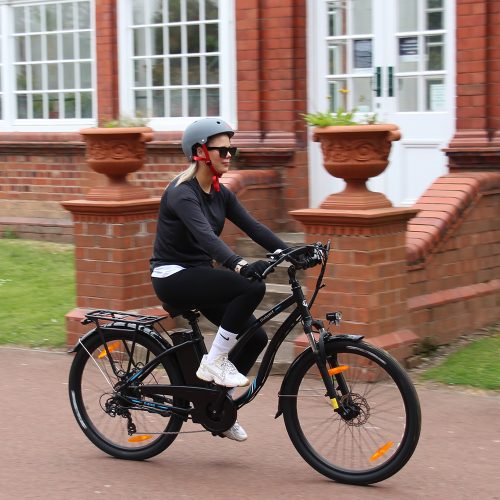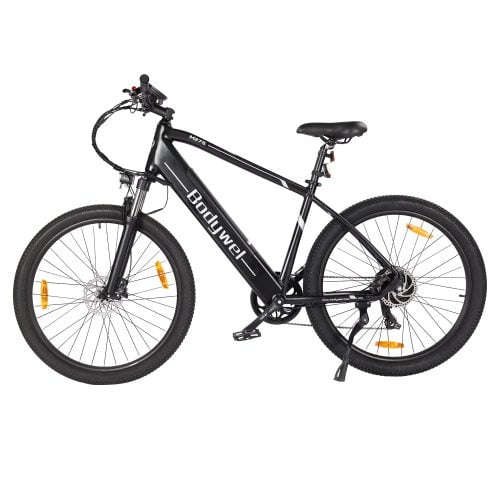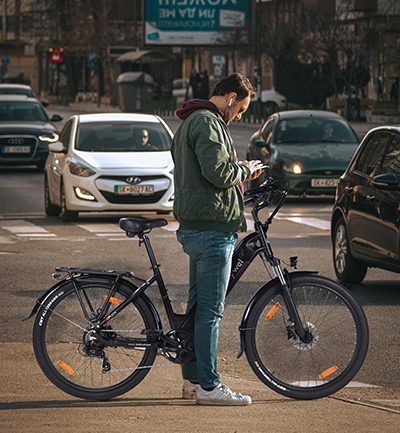Ever noticed how your posture can change your whole vibe? Stand tall and you feel like you can conquer the world, but slouch, and suddenly everything feels a bit meh. This mind-body connection is super important when you’re on a bike, too. The way you sit can make a huge difference to both how you feel and how well you ride. Let’s dive into why good cycling posture is a game-changer and how you can nail it.
Why Bother with Good Posture?
Let’s discuss the importance of proper cycling posture before moving on to the how-tos. Not only does it look good, but there are some actual advantages:
– Remain Injury-Free: Maintaining proper posture can help you prevent pains and aches, particularly in your knees, neck, and back. Source
– Spread Your Weight: When you maintain good posture, your weight is distributed so that no one area of your body is overworked.
– Ride Longer, Feel Stronger: You can ride longer without feeling exhausted if you use the proper muscles. Source
Pedal Power: You may get more out of each push by pedaling more efficiently when you have good posture.
Different Cycling Postures and Their Benefits
Cycling posture can vary depending on the type of riding and its purpose. Each posture has its unique advantages, catering to different cycling needs. Here are some common cycling postures and their benefits:
1. Upright Posture
This position is generally used when riding city bikes such as the Bodywel A26 and A275. When you’re enjoying an ebike tour, cruising through a park on a sunny afternoon, the breeze in your hair, and the world at your feet. Your body is relaxed, your back is straight but comfortable, and your hands are loosely gripping the handlebars. This is the upright posture, perfect for those leisurely rides.
– Comfort: This posture is the epitome of comfort, ideal for long, easy-going rides around the city or through nature trails. It takes the pressure off your back and neck, making it easier to ride for extended periods without discomfort.
– Visibility: Sitting upright gives you a better view of your surroundings, helping you spot obstacles, pedestrians, and traffic with ease.
– Relaxation: An upright posture encourages a relaxed state of mind, perfect for a casual ride that’s all about enjoyment.

Bodywel A26 City Ebike
2. Mountain Biking Posture
When you’re using a mountain ebike like the Bodywel M275, picture yourself on a rugged trail, weaving between trees and navigating rocky paths. Your body leans slightly forward, your back is curved just enough to stay balanced, and your hands are firmly gripping the handlebars. This is the mountain biking posture, designed for adventure and control.
– Control and Flexibility: This posture provides greater control over your bike, essential for handling the unpredictable nature of off-road trails.
– Shock Absorption: Slightly bent elbows and knees act as natural shock absorbers, reducing the impact from rough terrain and protecting your joints.
– Weight Distribution: By leaning forward, you can distribute your weight more effectively, enhancing balance and stability on challenging descents and technical sections.

Bodywel M275 Mtb Ebike
3. Resting Posture
If you’ve been cycling for hours and your muscles are starting to feel the strain, switch to a more relaxed position, hands resting lightly on top of the handlebars, your back straightening up a bit. This is the resting posture, a brief respite to recharge. This kind of posture can be used on any kind of ebike.
– Fatigue Reduction: This posture is a lifesaver during long rides, providing a chance to ease the tension in your arms and shoulders.
– Energy Recovery: Taking a moment to rest and adjust can help you regain energy, preventing stiffness and discomfort from prolonged exertion.
– Relaxation and Adjustment: This position allows you to make small adjustments and relax your muscles, getting ready to continue your journey with renewed vigor.
Mastering Proper Posture
For best results and to avoid injuries, it’s important to regularly check in with your posture when cycling. By keeping your body’s alignment and sensations in check—especially in the neck, shoulders, and back—you’ll be able to identify any tension or discomfort as soon as it appears. If you feel tension starting to creep in, you can take a breath and let it go, consciously trying to relax those muscles; if discomfort continues, it’s important to honor your body and take a brief break.
Handy Tips for Maintaining Great Posture
Here are some extra tips to keep you riding comfortably:
– Bike Fit Matters: Make sure your bike is the right size. Too small, and you’re hunched; too big, and you’re overreaching. Both spell trouble.
– Take Breaks: Long rides can be tough on your posture. Regular breaks help you stay fresh and maintain good form.
– Build Endurance Gradually: Start with shorter rides and work your way up to longer ones to build your endurance.
Boost Your Posture Game
Your posture off the bike matters too. Activities like yoga and meditation can help you become more aware of your body and release tension. Yoga, in particular, strengthens your core, which is key for good posture. Regular stretching also improves flexibility and reduces muscle tension.
Other tips for great posture include:
– Mind Your Sitting Habits: Good sitting posture can translate to better cycling posture.
– Ergonomic Workspace: Set up your desk to support good posture.
– Stay Active: Regular physical activity keeps your muscles strong and flexible.
Good posture isn’t just about avoiding aches and pains—it’s about enhancing your entire riding experience. When you maintain proper alignment, you’re setting yourself up for a smoother, more enjoyable journey. So, the next time you’re in an ebike tour, think about engaging your core, relaxing your shoulders, and finding that perfect balance. With the right posture, you can ride longer, feel stronger, and truly savor every moment on the road. Happy cycling, and may your rides be ever enjoyable!


